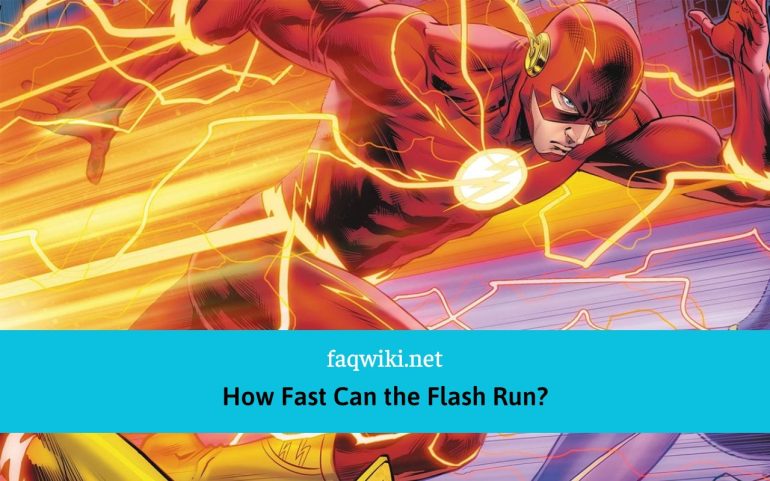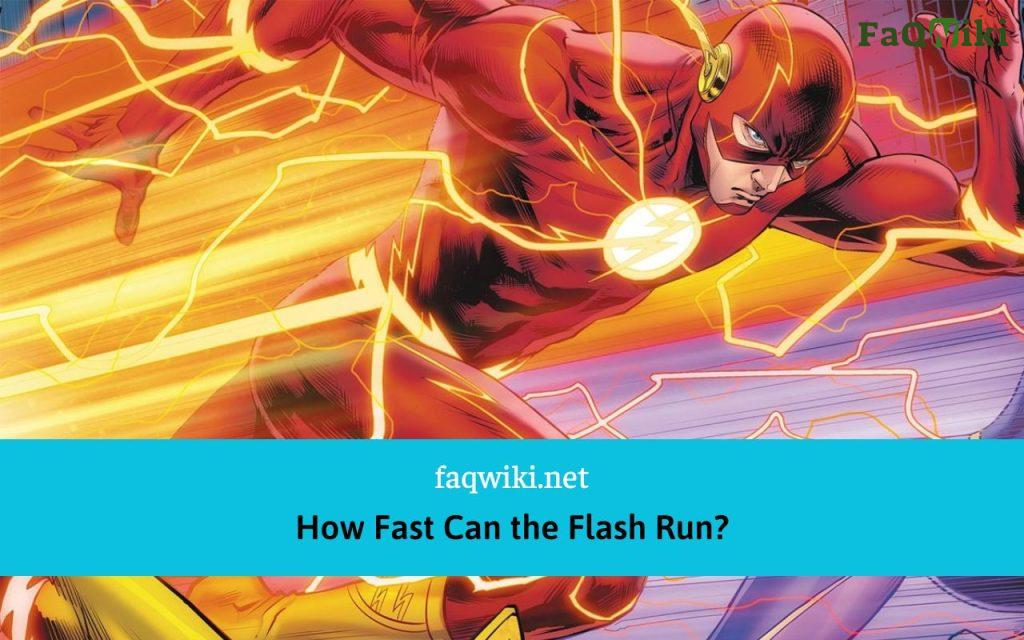How Fast Can the Flash Run?

How Fast Can the Flash Run? The Flash is one of the most beloved superheroes in popular culture, and one of his most well-known abilities is his superhuman speed. But just how fast can The Flash run? In this article, we will explore the science of The Flash’s speed, including the role of physics and his unique physiology, as well as the concept of the Speed Force and how it affects his speed. We will also examine how The Flash’s speed has evolved over time in the comics and on screen, and the various limits and dangers associated with moving at such high speeds. Furthermore, we will compare The Flash’s speed to other speedsters in both the comic book and real-world realms, and explore his other unique abilities beyond just super speed. Finally, we will examine The Flash’s impact on popular culture and what the future holds for this iconic superhero.

The Science of Super Speed
When it comes to The Flash’s speed, there are a few key factors to consider from a scientific standpoint. First and foremost is the role of physics, specifically the concepts of friction, air resistance, and acceleration. The Flash’s ability to move at superhuman speeds is due in large part to his ability to minimize the effects of friction and air resistance, as well as his incredible acceleration. This allows him to run faster than almost any other living being on the planet.
In addition to the laws of physics, The Flash’s unique physiology also plays a significant role in his speed. For example, his cells are constantly regenerating at an accelerated rate, which allows him to recover quickly from physical exertion. Additionally, his body produces a unique energy field that acts as a protective shield, further allowing him to move at high speeds without sustaining injury. Finally, The Flash’s brain is able to process information and react to stimuli at an incredible rate, allowing him to navigate his environment while running at superhuman speeds.
Exploring the Speed Force
One of the key concepts associated with The Flash’s speed is the idea of the Speed Force. This is a mysterious energy field that exists outside of normal space-time and is intimately connected to The Flash and his speed. It is said that The Flash is able to tap into the Speed Force to increase his speed and access other unique abilities. While the Speed Force has been explored in depth in the comic books, it has also been referenced in the TV show, providing a deeper understanding of how it affects The Flash’s powers.
According to comic book lore, the Speed Force is a unique energy field that exists in the multiverse, and is accessed by only a select few speedsters. It is said to exist outside of normal space-time and is a source of limitless energy that can be harnessed to increase one’s speed and access other unique abilities. In the TV show, the Speed Force is portrayed as a sort of alternate dimension that The Flash can access by running at high speeds. This allows him to move through time and space, as well as access other dimensions and alternate versions of himself.
The Evolution of The Flash’s Speed
Over the years, The Flash’s speed has evolved and changed in the comics and on screen. In the early days of the character, his speed was relatively limited, and he was only able to run at speeds slightly faster than the average person. However, as the character has evolved over time, his speed has increased dramatically, and he is now able to move at speeds that are virtually incomprehensible.
In the comics, The Flash has gone through several different iterations, each with its unique abilities and powers. For example, the original Flash, Jay Garrick, was only able to move at speeds slightly faster than the average person, while the second Flash, Barry Allen, was able to tap into the Speed Force and move at incredibly high speeds. Later versions of The Flash, such as Wally West and Bart Allen, also possessed unique abilities and powers related to speed.
On screen, The Flash has also undergone a significant evolution in terms of his speed. In the early TV adaptations of the character, such as the 1990 series, his speed was relatively limited, and he was only able to run at moderate speeds. However, with the advent of modern technology and special effects, The Flash’s speed has been taken to new heights in more recent adaptations, such as the CW’s TV series. In these adaptations, The Flash is able to move at incredible speeds, often depicted as a blur or streak of lightning.
Limits and Dangers of Super Speed
Despite his incredible speed, The Flash is not invincible, and there are several limits and dangers associated with moving at such high speeds. For example, The Flash’s body must be able to withstand the forces associated with moving at such high speeds, including g-forces and intense vibrations. Additionally, he must be able to avoid obstacles and react to his environment while moving at such high speeds, which can be incredibly difficult and dangerous.
Furthermore, The Flash’s speed is not without its limits. While he is able to move at incredibly high speeds, there are certain physical and metaphysical limits that he cannot surpass. For example, he cannot move faster than the speed of light, as this would violate the laws of physics. Additionally, moving at such high speeds can have negative consequences, such as creating powerful shockwaves or causing massive destruction in his wake.
Other Abilities Beyond Super Speed
While The Flash is best known for his incredible speed, he also possesses several other unique abilities that make him a formidable superhero. For example, he has the ability to vibrate his molecules at a high frequency, allowing him to phase through solid objects. He can also generate powerful sonic booms by snapping his fingers, and his speed allows him to create powerful whirlwinds and tornadoes.
In addition to these physical abilities, The Flash also possesses incredible mental and emotional strength. His ability to process information and react quickly to stimuli allows him to make split-second decisions and outthink his opponents. Additionally, his unwavering sense of justice and compassion make him a beloved and inspiring figure in the world of comics and popular culture.
The Impact of The Flash on Popular Culture
The Flash has had a significant impact on popular culture over the years, becoming one of the most iconic superheroes in the world. His incredible speed and unique abilities have inspired countless fans and creators, and he has appeared in numerous adaptations across various media. From comic books and TV shows to movies and video games, The Flash has become a beloved and enduring figure in popular culture.
Furthermore, The Flash has also played an important role in diversifying the world of superhero comics. From the introduction of Wally West as the first African American Flash to the introduction of characters like Jesse Quick and XS, The Flash has been at the forefront of promoting diversity and inclusivity in the world of comics.
The Future of The Flash
As The Flash continues to evolve and change over time, there are many exciting possibilities for the future of this iconic superhero. From new adaptations and storylines to new characters and abilities, the world of The Flash is constantly expanding and evolving. With the upcoming movie adaptation starring Ezra Miller, as well as new comics and TV shows in the works, it’s clear that The Flash will continue to be a beloved and inspiring figure in popular culture for years to come.
FAQs
Q: Can The Flash run faster than the speed of light?
A: No, according to the laws of physics, it is impossible to move faster than the speed of light.
Q: What is the Speed Force?
A: The Speed Force is a mysterious energy field that exists outside of normal space-time and is intimately connected with The Flash and other speedsters. It is the source of their incredible speed and unique abilities.
Q: What are some of The Flash’s other abilities besides super speed?
A: The Flash can vibrate his molecules at a high frequency, allowing him to phase through solid objects. He can also generate powerful sonic booms, create whirlwinds and tornadoes, and has incredible mental and emotional strength.
Q: How has The Flash impacted popular culture?
A: The Flash has become one of the most iconic and beloved superheroes in the world, inspiring countless fans and creators. He has appeared in numerous adaptations across various media and has played an important role in promoting diversity and inclusivity in the world of comics.
Q: What is the future of The Flash?
A: The Flash continues to evolve and change over time, with new adaptations, storylines, characters, and abilities being introduced. With new movies, TV shows, and comics in the works, The Flash will undoubtedly continue to be a beloved and inspiring figure in popular culture for years to come.
Conclusion
The Flash is a fascinating and beloved superhero with a unique and awe-inspiring set of abilities. His incredible speed and other abilities have inspired countless fans and creators, and he has played an important role in promoting diversity and inclusivity in the world of comics. While there are limits and dangers associated with super speed, The Flash’s unwavering sense of justice and compassion, as well as his incredible mental and emotional strength, make him a truly iconic and inspiring figure. As The Flash continues to evolve and change over time, there are many exciting possibilities for the future of this beloved superhero, and fans around the world can’t wait to see what’s next for this incredible speedster.
